A remarkable discovery near the Eyal Interchange in the Sharon region is shedding new light on ancient burial customs in the Roman period, with strong echoes of biblical symbolism. Four rare bronze discs, each adorned with a lion’s head, were unearthed in a grave at Khirbat Ibreika—an archaeological site located in central Samaria. The artifacts, estimated to be about 1,900 years old and dating to the 1st–2nd centuries CE, were found in a 2018 salvage excavation conducted by the Israel Antiquities Authority (IAA). The findings are now published for the first time in the latest issue of ‘Atiqot, the IAA’s official journal.
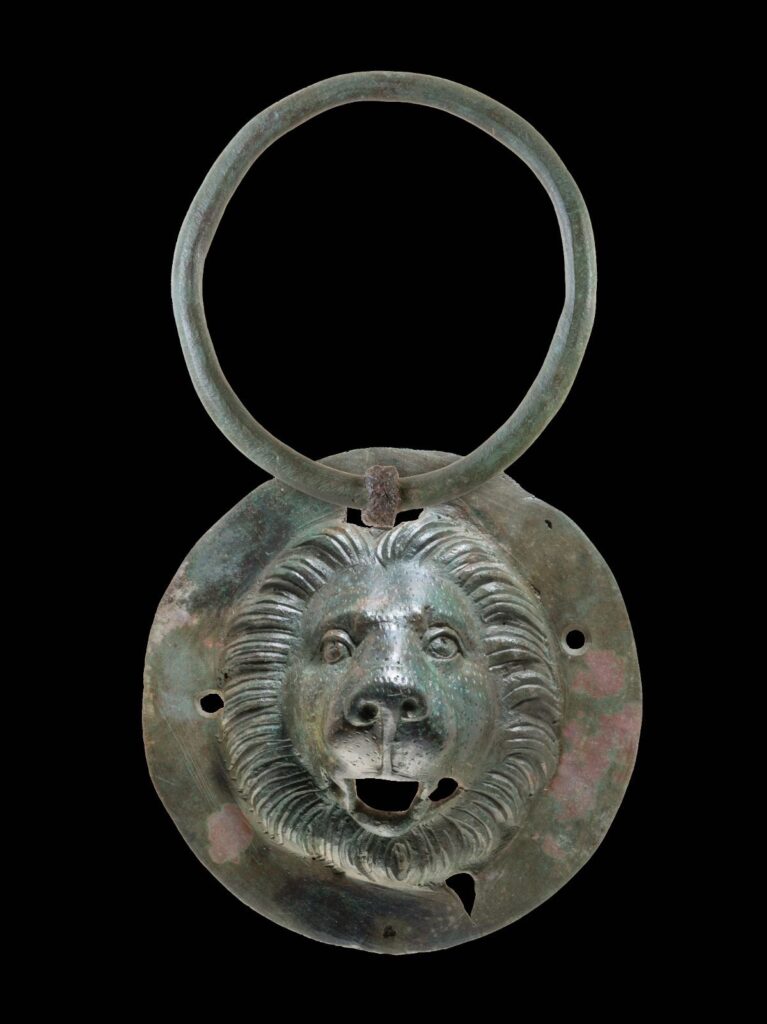
Lion head with a ring handle attached to the top of the disc. Photo: Dafna Gazit, Israel Antiquities Authority
The ornate discs, believed to have adorned the carrying handles of a coffin, were found carefully arranged in a burial chamber—likely marking the resting place of a high-status individual. The wooden coffin itself did not survive the passage of time, but the position and preservation of the bronze ornaments offer valuable clues into the burial customs and beliefs of the period.
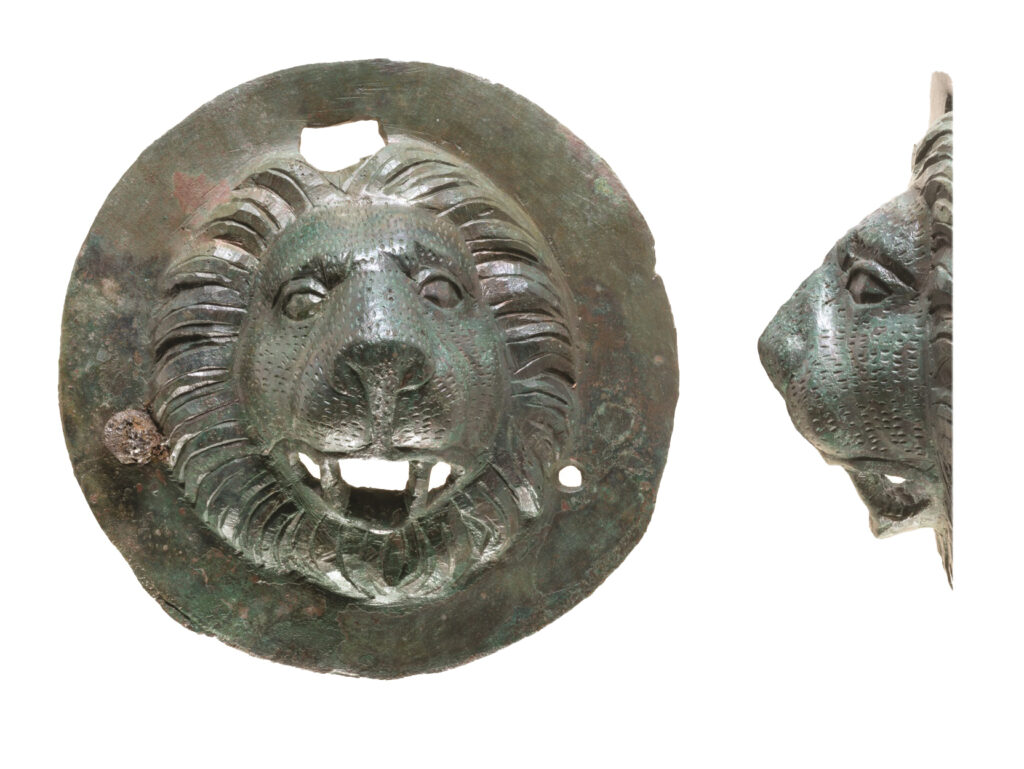
One of the lion heads uncovered at the Eyal Interchange. Photo: Dafna Gazit, Israel Antiquities Authority
Khirbat Ibreika, while little known to the broader public, has been identified as a small Roman-era settlement, possibly part of a larger network of agricultural communities that flourished in Judea and Samaria under Roman rule. It was named after the nearby tomb of a sheik from the Ottoman period [1517-1917 CE]. Though not extensively excavated before, the site has begun to yield evidence of cultural and economic activity dating back nearly two millennia. The site is near the modern city of Kfar Saba
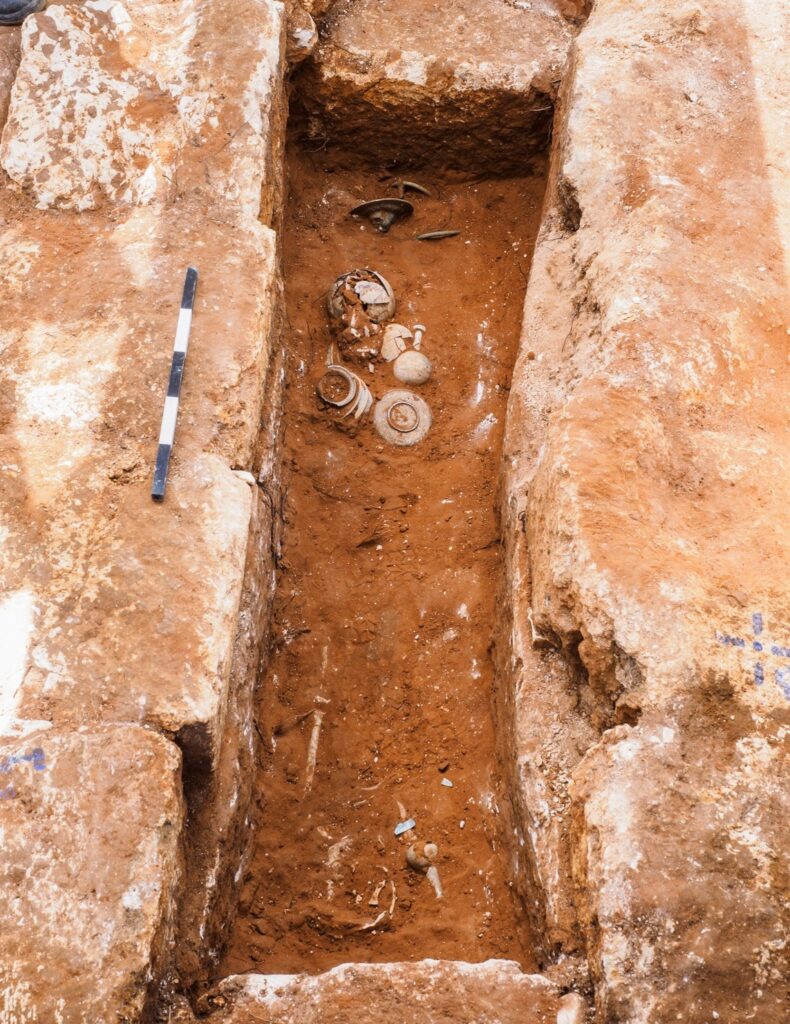
Dr. Elie Haddad and Elisheva Zwiebel, who led the excavation on behalf of the IAA, emphasize the uniqueness of the find. “This is a rare and distinctive set of objects,” the archaeologists explain. “In most known Roman examples, the carrying ring is threaded through the lion’s mouth. But in this case, the ring was attached to the top of the lion’s head. This would have allowed more flexibility in movement when lifting the coffin, likely using bars passed through the rings during a funeral procession.”
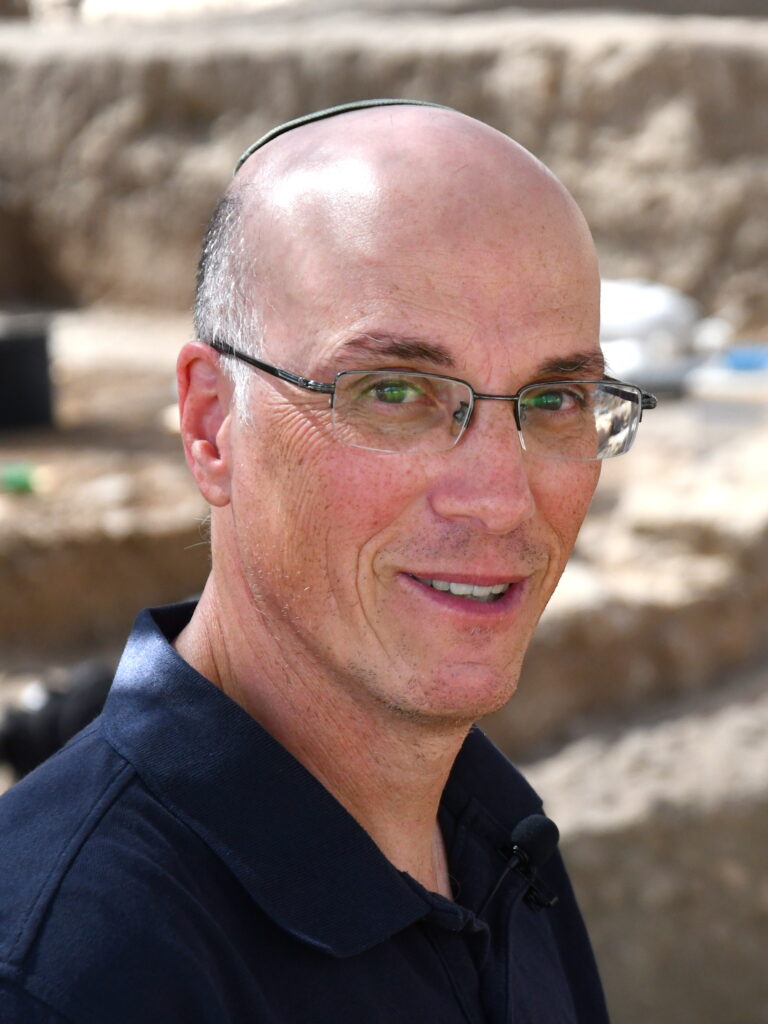
Dr. Elie Haddad from the Israel Antiquities Authority. Photo: Yoli Schwartz, Israel Antiquities Authority

Elisheva Zwiebel from the Israel Antiquities Authority. Photo: Yoli Schwartz, Israel Antiquities Authority
Each of the four lion-head discs features a different expression and distinct characteristics, from the mane design to the shape of the eyes and nose, suggesting they were individually cast rather than mass-produced. Comparable items have previously been found at other burial sites in Israel, including Netanya and Tel Dor, reinforcing the association with funerary contexts.
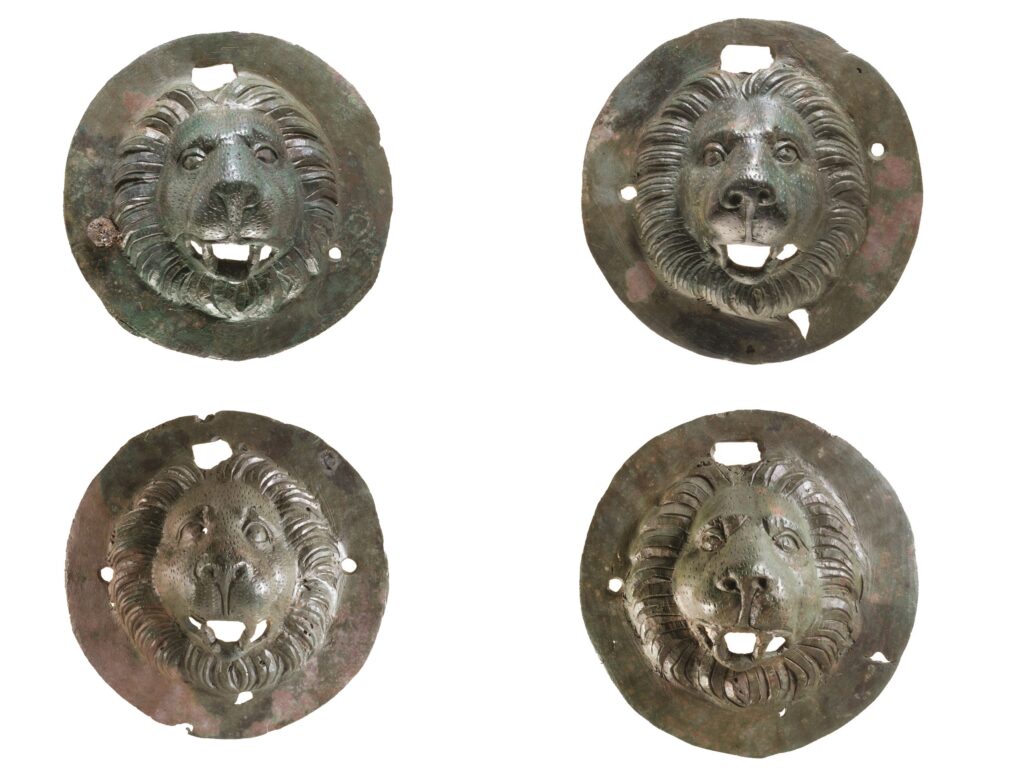
All four lion heads from the Eyal Interchange excavation. Photo: Dafna Gazit, Israel Antiquities Authority
The presence of lion imagery raises compelling questions about the cultural and religious background of the deceased. “In many ancient civilizations, lions symbolized strength, protection, and nobility,” note Haddad and Zwiebel. “While we don’t have conclusive evidence pointing to a specific faith, the iconography and burial style suggest a pagan individual of considerable status.”
Eli Escusido, director of the IAA, highlighted the broader cultural relevance of the lion motif. “Lions have long symbolized courage and sovereignty. Even today, the Israeli military’s campaign to neutralize Iran’s nuclear threat is named after a verse from Numbers—‘A nation will arise like a lion.’ These ancient artifacts echo that same heritage,” he said. Escusido also recounted how similar lion-head discs were returned to the IAA by a citizen as part of the Authority’s antiquities repatriation program, underscoring the value of public cooperation in preserving Israel’s archaeological treasures.
Israeli Heritage Minister Amichai Eliyahu offered a theological and historical reflection on the discovery. “Though these are pagan objects, they point to a broader truth: cultures that passed through this land often absorbed Jewish symbols without fully understanding their origin. The lion, first and foremost, is the emblem of the Tribe of Judah—‘Judah is a lion’s whelp’ (Genesis 49:9). This is a pattern we see across history—foreign civilizations borrowing from Jewish tradition, knowingly or not. Much of Western civilization is built on a foundation of biblical values and Jewish heritage.”
The find is not only of archaeological significance but also spiritual resonance. For Evangelical Christians who cherish the biblical connection to the land of Israel, such discoveries serve as a tangible reminder of the region’s deep and enduring biblical legacy. In the Psalms, King David wrote, “Sing to the Lord a new song… with the harp and the sound of singing” (Psalm 98:5), reflecting a cultural landscape where art, music, and burial practices were imbued with spiritual meaning. Similarly, in 2 Samuel 22:3, David refers to God as “my shield, and the horn of my salvation, my stronghold, and my refuge,” language that echoes the symbolism of lions as protectors and noble beasts.
As the Israel Antiquities Authority continues to publish findings from ongoing excavations, artifacts like these bronze lion discs remind us that even the smallest objects can roar with historical, cultural, and biblical significance.




